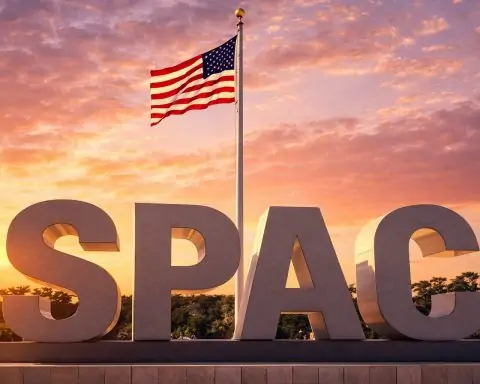- Blue Origin launched six passengers on the NS-34 suborbital flight on Aug. 3, 2025 at 8:43 a.m. ET from West Texas, including Justin Sun who paid $28 million for a seat in 2021.
- NS-34 marked Blue Origin’s 13th crewed space tourism launch.
- SpaceX’s Starlink Group 10-30 mission lifted off from Cape Canaveral on Aug. 4, 2025 with a 28-satellite payload aboard a Falcon 9 booster B1080, on its 21st flight.
- Starlink 10-30 was SpaceX’s 69th Starlink launch of 2025, bringing the total Starlink satellites launched in 2025 to over 1,600.
- SpaceX planned to land the Falcon 9 first stage on the drone ship Just Read the Instructions, aiming for the 485th booster recovery if successful.
- The NASA-ISRO NISAR Earth-observation satellite launched midweek from Satish Dhawan Space Centre, Sriharikota, with L-band and S-band radar to map Earth, orbiting at about 464 miles and surveying the globe every 12 days.
- China launched the sixth batch of LEO broadband satellites on Aug. 1 with Long March 8A from Wenchang, marking China’s 41st orbital launch of 2025 and the 586th flight of the Long March family.
- The Long March 8A can carry up to 7 metric tons to orbit and is optimized for frequent missions to support China’s growing LEO internet constellation.
- A cosmic-shield coating for perovskite solar cells, PDAI2, was developed by the University of Surrey, with Oxford University and partners in Australia and South Korea, improving radiation resistance and surviving simulated 20+ years in low Earth orbit.
- NASA and Roscosmos renewed cooperation on the International Space Station, extending operations through 2028 with a de-orbit planned by 2030, after a July 31 meeting in Houston between Dmitry Bakanov and NASA Acting Administrator Sean Duffy.
The first weekend of August 2025 was jam-packed with space milestones – from a billionaire’s joyride beyond Earth to game-changing satellite launches and international alliances renewed. Government agencies and private companies worldwide notched major achievements in just two days, spanning rocket launches, new satellites, cutting-edge tech advances, and even space diplomacy. Below we round up all the significant satellite and space news from August 3 and 4, 2025 – complete with expert insights and sources for each development.
Major Launches and Spaceflights
Blue Origin’s Tourist Flight Carries Crypto Mogul to Space
Jeff Bezos’ Blue Origin kicked off the weekend by launching six people on a suborbital New Shepard rocket flight Sunday morning. Liftoff of the NS-34 mission occurred at 8:43 a.m. ET on Aug. 3 from Blue Origin’s West Texas site [1]. The star passenger was Justin Sun, a 34-year-old cryptocurrency billionaire who had paid $28 million for a New Shepard seat back in 2021. Sun was joined by a culturally diverse crew of five other customers, including an American real estate investor, a Turkish entrepreneur, a Puerto Rican meteorologist, a British humanitarian, and a repeat Blue Origin flyer from the U.S. [2]. All six spacefarers experienced a few minutes of weightlessness above the Kármán line before returning safely to Earth.
Blue Origin touted the mission’s international makeup and transformative impact on its participants. Phil Joyce, Blue Origin’s Senior Vice President for New Shepard, reflected on the broader significance of the flight: “It was an honor to see so many nations represented on our flight today. The view of our fragile planet from space has a unifying effect on all who witness it, and I am always eager to see how our astronauts use this experience for the benefit of Earth.” [3] The successful NS-34 mission marked Blue Origin’s 13th crewed space tourism launch, demonstrating continued demand for suborbital trips among private adventurers.
SpaceX’s Starlink Launch Hits Reuse Milestone
Not to be outdone, SpaceX targeted the predawn hours of Monday (Aug. 4) for another Falcon 9 launch carrying a batch of Starlink internet satellites. The mission, designated Starlink Group 10-30, highlighted SpaceX’s dominance in rocket reusability. It was set to be the company’s 450th launch of a flight-proven Falcon booster – a remarkable statistic reflecting all Falcon 9 and Falcon Heavy liftoffs using previously flown first stages [4]. In fact, the booster for this flight (vehicle B1080) was embarking on its 21st mission, having previously supported two private astronaut missions (Axiom-2 and -3), ESA’s Euclid space telescope, and numerous Starlink deployments [5]. SpaceX aimed to launch the 28-satellite payload from Cape Canaveral Space Force Station at 3:44 a.m. EDT on Aug. 4 [6], with an 85% favorable weather forecast.
Each new Starlink launch adds to SpaceX’s ever-growing mega-constellation. This overnight mission was expected to be SpaceX’s 69th Starlink launch of 2025, pushing the total number of Starlink satellites put into orbit this year to well over 1,600 [7]. SpaceX planned to land the Falcon 9’s first stage on the droneship Just Read the Instructions in the Atlantic – which would mark the 485th successful booster recovery if all went well [8]. (SpaceX’s track record isn’t flawless, though – a similar Starlink mission in March saw a booster land on the droneship only to be lost due to a post-landing fire [9].) As of this writing, the Starlink 10-30 launch was on track, underscoring SpaceX’s relentless launch cadence and reuse milestones in pursuit of global broadband coverage.
NASA & ISRO Launch Revolutionary Earth-Mapping Satellite
In a landmark U.S.-India collaboration, NASA and the Indian Space Research Organisation (ISRO) successfully launched a sophisticated Earth observation satellite that promises unprecedented environmental data. The NASA-ISRO Synthetic Aperture Radar (NISAR) satellite blasted off mid-week from India’s Satish Dhawan Space Centre, Sriharikota [10] and news of the achievement made waves through the weekend. NISAR is the first joint mission between NASA and ISRO of this scale, equipped with cutting-edge L-band and S-band radar systems to map Earth’s land and ice surfaces in extraordinary detail. Orbiting ~464 miles high, NISAR will scan the entire globe every 12 days, detecting subtle changes in ecosystems, ice sheets, and the solid Earth – from forest biomass and soil moisture to millimeter-level ground movements that could foreshadow earthquakes or volcanic activity [11] [12].
Officials on both sides hailed the mission’s successful start as a milestone for international cooperation in science. “Congratulations to the entire NISAR mission team on a successful launch that spanned multiple time zones and continents in the first-ever partnership between NASA and ISRO on a mission of this sheer magnitude,” said Dr. Nicola Fox, NASA’s associate administrator for science [13]. ISRO Chairman Dr. V. Narayanan likewise lauded NISAR’s “powerful capability” to study Earth’s dynamic land and ice surfaces in greater detail than ever, noting this mission was over a decade in the making [14]. As NISAR begins its data-gathering, scientists anticipate a treasure trove of information to help communities worldwide better prepare for natural hazards and manage Earth’s vital resources [15] [16].
China Expands its Satellite Internet Constellation
China also notched a significant launch, expanding its nascent low-Earth-orbit internet mega-constellation. On Aug. 1 (just ahead of the weekend), a Chinese Long March 8A rocket lifted off from the Wenchang spaceport on Hainan Island, carrying the sixth batch of LEO broadband satellites for China’s network [17]. The afternoon launch deployed an array of small internet satellites developed by the Chinese Academy of Sciences, adding to a flurry of recent activity – it came just days after a fifth batch was launched on a Long March 6A from northern China’s Taiyuan site [18]. This latest mission marked China’s 41st orbital launch of the year and the 586th flight of a Long March series rocket [19], underscoring the country’s rapid launch tempo in 2025.
The expanding satellite fleet is part of China’s ambitious effort to build a global high-speed internet service akin to SpaceX’s Starlink. By steadily launching these LEO constellations, China aims to provide worldwide broadband coverage and secure a competitive stake in space-based internet connectivity [20]. Each successful deployment strengthens China’s presence in the increasingly crowded arena of communications satellites. While technical details of the satellites were not widely publicized, Chinese officials emphasized the program’s role in advancing commercial space capabilities. The launch also showcased the new Long March 8A variant, which can carry up to 7 metric tons to orbit and is optimized for frequent missions to support the growing constellation [21]. As China pushes forward, global satellite tracking networks are keeping a close eye on these additions – both for the services they promise and the space traffic they contribute to in low Earth orbit.
Industry Deals and Developments
EchoStar Orders 100 Satellites in $5B Constellation Push
In the commercial satellite sector, EchoStar made headlines by investing in a massive new constellation. The U.S.-based satellite communications company placed a $1.3 billion order with Canada’s MDA Ltd. to build the first 100 satellites of EchoStar’s planned low Earth orbit network [22]. This is the initial phase of a proposed $5 billion direct-to-device (D2D) constellation aimed at connecting ordinary mobile devices directly via satellite, bypassing traditional cell towers. EchoStar’s bold foray is meant to compete in the burgeoning market for satellite-to-phone broadband services – alongside ventures like SpaceX’s Starlink (with cell partners) and AST SpaceMobile.
However, EchoStar’s ambitious plans come with challenges. The company has been facing intense regulatory scrutiny over its use of wireless spectrum, so much so that EchoStar warned the outcome of those spectrum license debates could determine its financial survival [23]. Industry analysts note that if regulators don’t grant needed approvals, EchoStar’s multi-billion dollar bet could be at risk of bankruptcy [24]. Still, the MDA contract signals confidence – it will more than double MDA’s satellite production capacity, as the manufacturer is expanding facilities to be able to assemble up to two satellites per day in Montreal [25]. As this deal moves forward, both companies are betting on the future of direct-to-handset satellite communications, an area poised to revolutionize global connectivity if technical and regulatory hurdles can be overcome.
Breakthrough “Cosmic Shield” for Satellite Solar Panels
On the technology front, researchers in the UK announced a cosmic breakthrough that could dramatically extend the life of satellites in orbit. Engineers at the University of Surrey, in collaboration with Oxford University and partners in Australia and South Korea, have developed a new radiation-resistant coating for next-generation solar cells [26]. This protective layer – made of a compound called propane-1,3-diammonium iodide (PDAI₂) – acts like a tiny force field for perovskite solar cells, which are lightweight, high-efficiency cell types promising to replace traditional silicon on satellites. In space, intense radiation normally degrades solar panels over time, especially the organic components in perovskites. But in tests simulating over 20 years of low-Earth orbit exposure, Surrey’s coated cells retained significantly more performance and structural integrity than uncoated ones [27]. The coating works by stabilizing vulnerable molecules and preventing them from breaking down into gases under radiation bombardment [28].
This innovation could lead to satellite solar arrays that are lighter, cheaper, and longer-lasting than ever before [29]. “Perovskite solar cells are promising for space, but the various sources of radiation in our solar system are still a major threat – especially to the organic molecules that make them work. Our coating helps protect those fragile parts, stopping them from breaking down and helping the cells stay efficient for longer,” explained Dr. Jae Sung Yun, a lead researcher on the project [30]. By enabling perovskite panels to survive the harsh space environment, this “cosmic shield” technology could reduce the cost of powering satellites and even spacecraft. It’s a prime example of how cutting-edge materials science is advancing the longevity and sustainability of space infrastructure.
Space Policy and International Cooperation
NASA and Roscosmos Reopen Channels (ISS Partnership Extended)
Amid the flurry of technical achievements, a quieter but significant diplomatic development also unfolded. In a rare face-to-face meeting, the heads of NASA and Russia’s space agency Roscosmos sat down together for the first time in nearly seven years [31]. Roscosmos Director General Dmitry Bakanov met with NASA’s acting administrator Sean Duffy in Houston on July 31, a meeting that Roscosmos heralded as a historic step in renewing cooperation [32]. NASA, for its part, offered little public fanfare – a reflection of the sensitive geopolitical backdrop – but the tangible outcome was notable. According to Russian officials, the talks “went well” and produced an agreement to continue joint operation of the International Space Station through 2028 [33] [34]. “We agreed that we will operate the ISS until 2028… and we will work on the issue of de-orbiting it by 2030,” Bakanov told reporters, as quoted by TASS news agency [35]. This aligns Russia with NASA’s plan to keep the aging orbital laboratory running for five more years (the U.S. intends to retire the ISS in 2030).
The renewed commitment is a significant olive branch amid strained East-West relations. Space has long been a rare realm of collaboration between the U.S. and Russia, even through periods of terrestrial tension [36]. In recent years that cooperation was clouded by Russia’s war in Ukraine and sanctions, with Roscosmos previously threatening to leave the ISS partnership after 2024. Now, the extension to 2028 provides reassurance to the international space community – including Europe, Japan, and Canada – that the ISS program will remain intact a while longer. Roscosmos touted the meeting as breaking an ᴉce age: the agency “hailed the first face-to-face meeting between its leader and the head of NASA in almost seven years” [37]. Even if NASA kept the encounter low-key, the outcome speaks volumes about pragmatism in space affairs. Both sides benefit by keeping the ISS flying: Russia preserves prestige (and access to U.S. cargo and astronaut transport), while NASA and partners gain time to develop a commercial space station replacement. It’s a rare bit of superpower synergy in an otherwise fraught geopolitical climate, and a win for the six-person crew aboard the ISS who rely on seamless cooperation.
Regulatory Moves and Outlook
Space policy shifts weren’t limited to global diplomacy. In the United States, regulators and lawmakers continued grappling with the rapid growth of satellite fleets. One focal point is the Federal Communications Commission (FCC) oversight of new mega-constellations like the one EchoStar envisions. EchoStar’s disclosure that spectrum licensing challenges could jeopardize its $5 billion project [38] highlights how spectrum policy and orbital debris rules are becoming make-or-break factors for commercial space ventures. Meanwhile, industry groups are watching Washington, D.C. for progress on updating space traffic management and collision avoidance frameworks as thousands of new satellites launch each year. Internationally, agencies are negotiating norms for mega-constellation coordination to prevent radio interference and congestion in key orbits.
Another policy arena in focus is space tourism regulation, given the uptick in private astronaut flights like Blue Origin’s. Authorities are evaluating stricter safety standards and possibly a “space passenger bill of rights” as suborbital rides move from novelty to more routine. And on the scientific front, NASA’s leadership changes could influence priorities: with NASA Administrator Bill Nelson nearing the end of his term, Acting Administrator Duffy’s outreach to Roscosmos and others may set a tone for a more inclusive, coalition-driven approach to exploration. In short, the first days of August underscored that robust activity in space is forcing equally swift evolution in space policy and governance – from managing crowded skies to keeping channels of cooperation open across political divides.
Conclusion
From spectacular rocket launches to quiet handshake agreements, the space sector saw a bit of everything during the August 3-4, 2025 window. Commercial players like Blue Origin and SpaceX demonstrated how rapidly access to space is expanding, whether for tourism or telecom. Government collaborations bore fruit in the form of advanced satellites (NASA-ISRO’s NISAR) and renewed commitments (ISS extension), proving that international teamwork remains vital for big projects. Technologists delivered innovations that could make future missions more resilient and cost-effective. And behind the scenes, policy architects worked to ensure all this growth in space is sustainable and safe. It’s clear that as we enter the late 2020s, space is more global and dynamic than ever – with each week bringing discoveries, deals, and decisions that shape humanity’s final frontier. The developments of this weekend alone capture the excitement and challenges of a new space age in full swing.
Sources: [39] [40] [41] [42] [43] [44] [45] [46] [47] [48] [49] [50] [51]
References
1. www.space.com, 2. www.space.com, 3. www.space.com, 4. spaceflightnow.com, 5. spaceflightnow.com, 6. spaceflightnow.com, 7. spaceflightnow.com, 8. spaceflightnow.com, 9. mynews13.com, 10. www.spacedaily.com, 11. www.spacedaily.com, 12. www.spacedaily.com, 13. www.spacedaily.com, 14. www.spacedaily.com, 15. www.spacedaily.com, 16. www.spacedaily.com, 17. www.spacedaily.com, 18. www.spacedaily.com, 19. www.spacedaily.com, 20. keeptrack.space, 21. www.spacedaily.com, 22. spacenews.com, 23. spacenews.com, 24. spacenews.com, 25. spacenews.com, 26. www.solardaily.com, 27. www.solardaily.com, 28. www.solardaily.com, 29. www.solardaily.com, 30. www.solardaily.com, 31. spacenews.com, 32. spacenews.com, 33. phys.org, 34. phys.org, 35. phys.org, 36. phys.org, 37. spacenews.com, 38. spacenews.com, 39. www.space.com, 40. www.space.com, 41. spaceflightnow.com, 42. spaceflightnow.com, 43. www.spacedaily.com, 44. www.spacedaily.com, 45. www.spacedaily.com, 46. keeptrack.space, 47. spacenews.com, 48. www.solardaily.com, 49. www.solardaily.com, 50. spacenews.com, 51. phys.org










